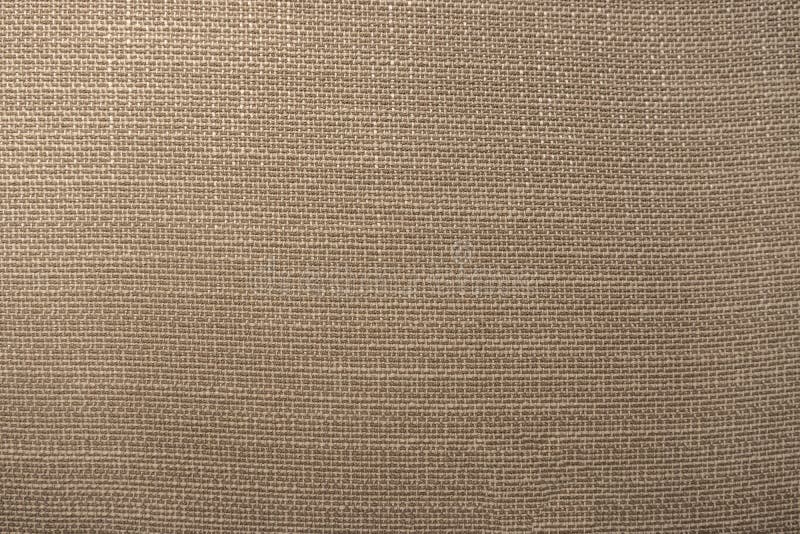The Dawn of a New Material: Analyzing Apple’s Shift with FineWoven AirTag Accessories
In the ever-evolving world of consumer electronics, change is the only constant. For years, Apple has defined luxury and premium feel through materials like aluminum, glass, and leather. However, the latest wave of Apple accessories news signals a significant strategic pivot. The company has bid farewell to leather in its first-party accessory lineup, introducing a new, proprietary material called FineWoven. This change is most prominently featured in the latest MagSafe Wallets and, crucially for those who rely on Apple’s tracking technology, the new AirTag Key Rings. This move is far more than a simple material swap; it’s a statement about sustainability, a re-evaluation of luxury, and a glimpse into the future design language of the entire Apple ecosystem news landscape. This article provides a comprehensive technical breakdown of the new FineWoven accessories for AirTag, analyzing the material itself, its practical implications for users, and the broader strategic importance of this eco-conscious transition.
Section 1: Unpacking the FineWoven Revolution for AirTag
The announcement of FineWoven accessories represents a tangible shift in Apple’s product philosophy. While the core functionality of the AirTag remains unchanged—powered by the vast Find My network and enhanced by iOS updates—the physical enclosure that makes it a daily utility has been completely reimagined. Understanding this change requires looking at the material, the design, and its place within the current product line.
What Exactly is FineWoven?
Apple describes FineWoven as a “luxurious and durable microtwill” made from 68 percent post-consumer recycled polyester. The material has a soft, sueded texture that is distinct from the smooth grain of the leather it replaces. From a technical standpoint, microtwill is a type of fabric woven with a diagonal parallel rib pattern, known for its durability and soft hand-feel. Apple’s innovation lies in creating a version of this fabric that meets its stringent aesthetic and environmental standards. The move aligns with the company’s 2030 carbon neutrality goal and represents a significant step in reducing its reliance on animal products. This focus on sustainability is becoming a central theme, influencing everything from packaging to the materials used in high-end devices discussed in Apple Vision Pro news.
Design, Feel, and First Impressions
The new FineWoven AirTag Key Ring and the updated MagSafe Wallet with Find My (which often houses an AirTag for wallet tracking) are available in a range of colors designed to complement the latest iPhone lineup. The key ring features a polished stainless steel ring attached to a precision-cut FineWoven loop that securely holds the AirTag. The material feels warmer and softer to the touch than leather, offering a different kind of tactile experience. While leather develops a unique patina over time, FineWoven is designed to maintain its color and texture, though long-term wear is still a subject of community discussion. This shift challenges the traditional association of luxury with leather, proposing a new, more modern and responsible definition of “premium.” This is a recurring theme in recent iPhone news, where material science plays a key role in product differentiation.
Integration with the Find My Ecosystem
While the accessory material is new, the core technology remains a cornerstone of the Apple experience. An AirTag housed in a FineWoven holder still leverages the encrypted and anonymous Find My network, which crowdsources its location from hundreds of millions of Apple devices worldwide. This network includes iPhones, iPads, and Macs, making it incredibly robust. The latest iOS updates news continues to refine this system, enhancing features like Precision Finding, which uses the U1 Ultra Wideband chip in modern iPhones to provide turn-by-turn directions to a lost item. This deep integration is a prime example of Apple’s ecosystem at its best, a topic that frequently appears in iPad news and Apple Watch news as more devices contribute to and benefit from the network.
Section 2: A Deeper Technical and Practical Analysis

Beyond the marketing claims and initial impressions, a deeper analysis of FineWoven’s practical performance and its place within Apple’s security framework is essential. Users need to know if this new material is a worthy successor to the time-tested durability of leather and how it holds up in real-world scenarios.
Durability, Wear, and Potential Pitfalls
One of the most significant questions surrounding FineWoven is its long-term durability. Leather is known for its resilience and ability to withstand scrapes, moisture, and daily abuse. Fabric, even a durable microtwill, presents different challenges. Early reports and stress tests suggest that FineWoven can be more susceptible to scratches from sharp objects, like keys in a pocket, than leather. Furthermore, its fabric nature makes it more prone to absorbing oils and liquids, potentially leading to stains if not cleaned properly. This is a critical consideration for an item like a key ring, which is constantly handled and exposed to the elements. While Apple claims the material is durable, users should be mindful of its limitations compared to the ruggedness of its predecessor. This is a common theme in Apple accessories news, where aesthetics must be balanced with real-world resilience.
The Security and Privacy Framework
It’s impossible to discuss AirTags without touching on the robust privacy and security measures Apple has implemented. This remains a highlight in all AirTag news. The communications within the Find My network are end-to-end encrypted, meaning not even Apple can see the location of your AirTag. This commitment to user privacy is a core tenet of the company’s philosophy, a frequent topic in Apple privacy news and iOS security news. Apple has also proactively addressed concerns about unwanted tracking by introducing features that notify users if an unknown AirTag is traveling with them. These safeguards are built into the operating system and function seamlessly, regardless of whether the AirTag is housed in a leather, silicone, or the new FineWoven accessory. This level of integrated security is what sets the Apple ecosystem apart from many competitors.
Real-World Application: A Case Study
Consider a daily commuter, Sarah. She attaches her new FineWoven AirTag Key Ring to her car keys. The soft material prevents her keys from scratching her phone screen in her pocket, a small but welcome benefit. One morning, in a rush, she misplaces her keys in her apartment. Instead of a frantic search, she opens the Find My app on her iPhone. The app shows the keys are nearby. She activates Precision Finding, and her iPhone screen guides her with haptic feedback and visual cues directly to the couch cushions where her keys are hiding. Later, at a coffee shop, she leaves her backpack behind. Her iPhone proactively alerts her with a separation alert, “Backpack Left Behind.” She can then use the Find My app to see its last known location on a map, leveraging a passing stranger’s iPhone to anonymously update its position. In this scenario, the FineWoven accessory is the physical interface for this powerful digital service, highlighting how hardware and software work in concert.
Section 3: The Broader Implications of Apple’s Strategic Pivot
The introduction of FineWoven is not an isolated event. It is a calculated move that reflects Apple’s long-term vision for its brand, its environmental responsibilities, and the future of its product ecosystem. This shift has wide-ranging implications for the market and for consumers.
Sustainability as a Core Product Feature
Apple is increasingly marketing sustainability not just as a corporate responsibility but as a consumer-facing product feature. By replacing a popular and traditional material like leather with a recycled alternative, Apple is making a bold statement. This move pressures the entire accessory industry to reconsider its material sourcing. This focus on the environment is a powerful marketing tool, resonating with a growing segment of consumers who prioritize eco-friendly products. We see this trend across the product line, from the recycled aluminum in MacBooks to the energy efficiency of the HomePod mini. This is a key piece of ongoing Apple TV marketing news as well, often highlighting the recycled materials in the Siri Remote.

A Unified Design Language for the Future
FineWoven establishes a new material in Apple’s design playbook. It’s plausible that we will see this material or its derivatives appear in other accessories. Imagine a FineWoven band for the Apple Watch, a case for AirPods Pro, or even lining for a future Vision Pro accessories news release. This creates a cohesive aesthetic across the entire ecosystem. This consistency is a hallmark of Apple’s design philosophy, reminiscent of how the iconic white earbuds became synonymous with the iPod. While talk of an iPod revival news cycle may be wishful thinking for some, the design legacy of products like the iPod Classic and iPod Nano lives on in Apple’s meticulous attention to material and form. Even the thought of a modern iPod Touch news update would surely involve these new material considerations.
The Siri and AI Integration Angle
While not directly related to the material, the ecosystem that supports AirTags is becoming smarter. Future Siri news could involve more proactive integrations, such as Siri reminding you to take your AirTag-equipped keys before you leave based on your calendar appointments. The continuous improvement of on-device intelligence is part of what makes the entire system, from a HomePod to an Apple Pencil, feel interconnected. This intelligence also extends to health and wellness, with Apple health news often focusing on how devices work together to provide a holistic view of a user’s well-being.
Section 4: Recommendations and Best Practices
With any new technology or material, consumers need practical advice. Is the FineWoven AirTag Key Ring or MagSafe Wallet the right choice for you? How do you care for it, and what are the alternatives?

Pros and Cons: FineWoven vs. Leather
Pros of FineWoven:
- Eco-Friendly: Made from 68% post-consumer recycled materials, reducing carbon footprint.
- Modern Aesthetic: Offers a new, soft-touch, matte finish that aligns with current design trends.
- Lightweight: Generally lighter than a comparable leather product.
- Animal-Free: A crucial benefit for vegan or ethically-minded consumers.
Cons of FineWoven:
- Unproven Durability: Long-term resistance to scratches, scuffs, and stains is still in question.
- Different Aging Process: Will not develop the unique patina that many users appreciate in leather.
- Cleaning and Maintenance: May require more careful cleaning to avoid staining compared to wipe-clean leather.
Tips for Care and Maintenance
To get the most out of your FineWoven accessory, follow these best practices:
- Avoid Sharp Objects: Be mindful of placing FineWoven accessories in pockets or bags with keys, pens, or other sharp items to prevent scratches.
- Clean Spills Immediately: For liquid spills, blot gently with a clean, dry, lint-free cloth. Do not rub aggressively.
- Gentle Cleaning: For dirt or stains, use a slightly damp cloth with a small amount of mild soap. Test on an inconspicuous area first and allow it to air dry completely.
- Avoid Harsh Chemicals: Do not use bleach, alcohol, or abrasive cleaners, as they can damage the fabric’s color and texture.
Conclusion: A New Chapter in Apple’s Material Story
The launch of FineWoven accessories for AirTag is more than just a footnote in the latest cycle of iPhone news. It represents a deliberate and forward-thinking evolution in Apple’s design and environmental strategy. While the new material presents a different set of trade-offs compared to the leather it replaces—trading proven ruggedness for a sustainable, modern aesthetic—it unequivocally sets a new standard for the industry. For consumers, the choice between FineWoven and third-party alternatives will depend on personal priorities: sustainability, tactile feel, or long-term durability. Ultimately, this move demonstrates Apple’s commitment to weaving its environmental values directly into the fabric of its products, creating an ecosystem that is not only technologically advanced and secure but also increasingly conscious of its impact on the world.











